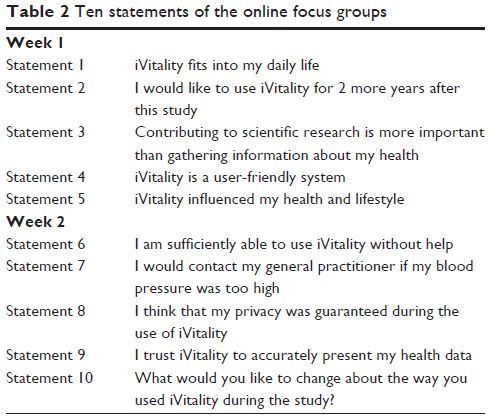9 5 3 6 3
论文已发表
注册即可获取德孚的最新动态
IF 收录期刊
- 3.3 Breast Cancer (Dove Med Press)
- 3.4 Clin Epidemiol
- 2.5 Cancer Manag Res
- 2.9 Infect Drug Resist
- 3.5 Clin Interv Aging
- 4.7 Drug Des Dev Ther
- 2.7 Int J Chronic Obstr
- 6.6 Int J Nanomed
- 2.5 Int J Women's Health
- 2.5 Neuropsych Dis Treat
- 2.7 OncoTargets Ther
- 2.0 Patient Prefer Adher
- 2.3 Ther Clin Risk Manag
- 2.5 J Pain Res
- 2.8 Diabet Metab Synd Ob
- 2.8 Psychol Res Behav Ma
- 3.0 Nat Sci Sleep
- 1.8 Pharmgenomics Pers Med
- 2.7 Risk Manag Healthc Policy
- 4.2 J Inflamm Res
- 2.1 Int J Gen Med
- 4.2 J Hepatocell Carcinoma
- 3.7 J Asthma Allergy
- 1.9 Clin Cosmet Investig Dermatol
- 2.7 J Multidiscip Healthc

Acceptance and usability of a home-based monitoring tool of health indicators in children of people with dementia: a Proof of Principle (POP) study
Authors Boessen AB, Vermeulen J, de Witte LP
Received 17 February 2017
Accepted for publication 9 May 2017
Published 1 August 2017 Volume 2017:11 Pages 1317—1324
DOI https://doi.org/10.2147/PPA.S135022
Checked for plagiarism Yes
Review by Single-blind
Peer reviewers approved by Dr Akshita Wason
Peer reviewer comments 2
Editor who approved publication: Dr Johnny Chen
Background: Large-scale cohort studies are needed to confirm the relation
between dementia and its possible risk factors. The inclusion of people with
dementia in research is a challenge, however, children of people with dementia
are at risk and are highly motivated to participate in dementia research. For
technologies to support home-based data collection during large-scale studies,
participants should be able and willing to use technology for a longer period
of time.
Objective: This study investigated acceptance and usability of iVitality, a
research platform for home-based monitoring of dementia health indicators, in
151 children of people with dementia and investigated which frequency of
measurements is acceptable for them.
Methods: Participants were randomized to fortnightly or monthly
measurements. At baseline and after 3 months, participants completed an online
questionnaire regarding the acceptance (Technology Acceptance Model; 38 items)
and usability (Post-Study System Usability Questionnaire; 24 items) of iVitality.
Items were rated from 1 (I totally disagree) to 7 (I totally agree).
Participants were also invited to take part in an online focus group (OFG)
after 3 months of follow-up. Descriptive statistics and both
two-sample/independent and paired t-tests were used
to analyze the online questionnaires and a directed content analysis was used
to analyze the OFGs.
Results: Children of people with dementia accept iVitality after long-term
use and evaluate iVitality as a user-friendly, useful, and trusted technology,
despite some suggestions for improvement. Overall, mean scores on acceptance
and usability were higher than 5 (I somewhat agree), although the acceptance
subscales “social influence” and “time” were rated somewhat lower. No
significant differences in acceptance and usability were found between both
protocol groups. Over time, “affect” significantly increased among participants
measuring blood pressure fortnightly.
Conclusion: iVitality has the potential to be used in large-scale studies for
home-based monitoring of health indicators related to the development of
dementia.
Keywords: dementia, risk factors, e-health, telemonitoring, acceptance,
usability
